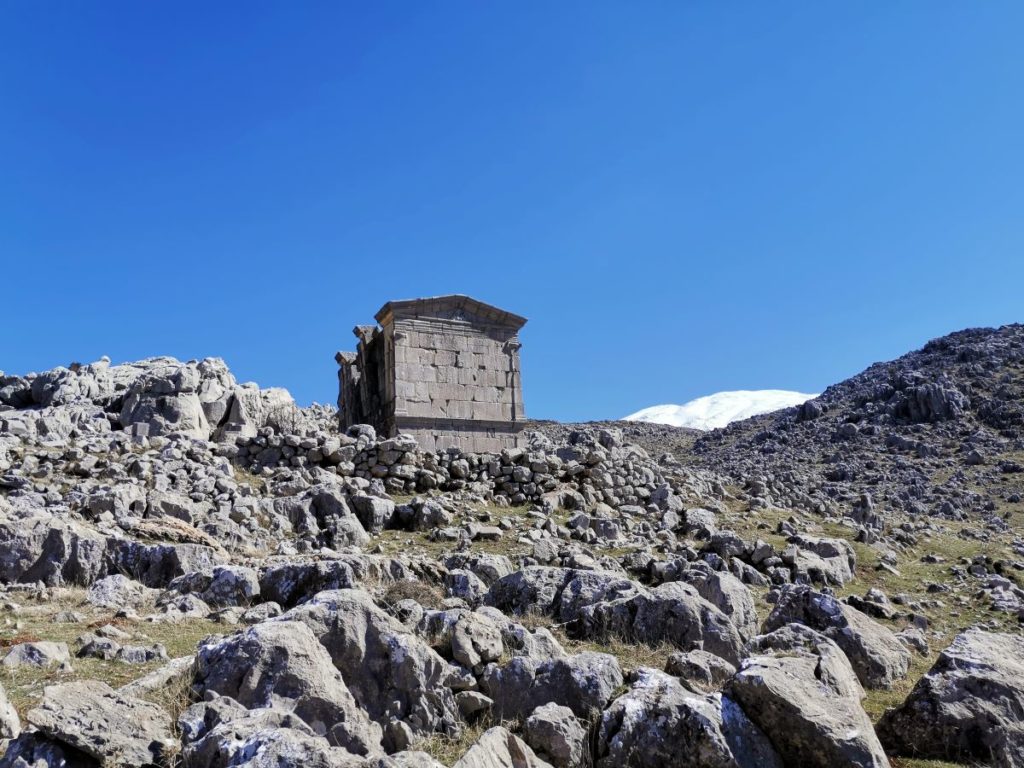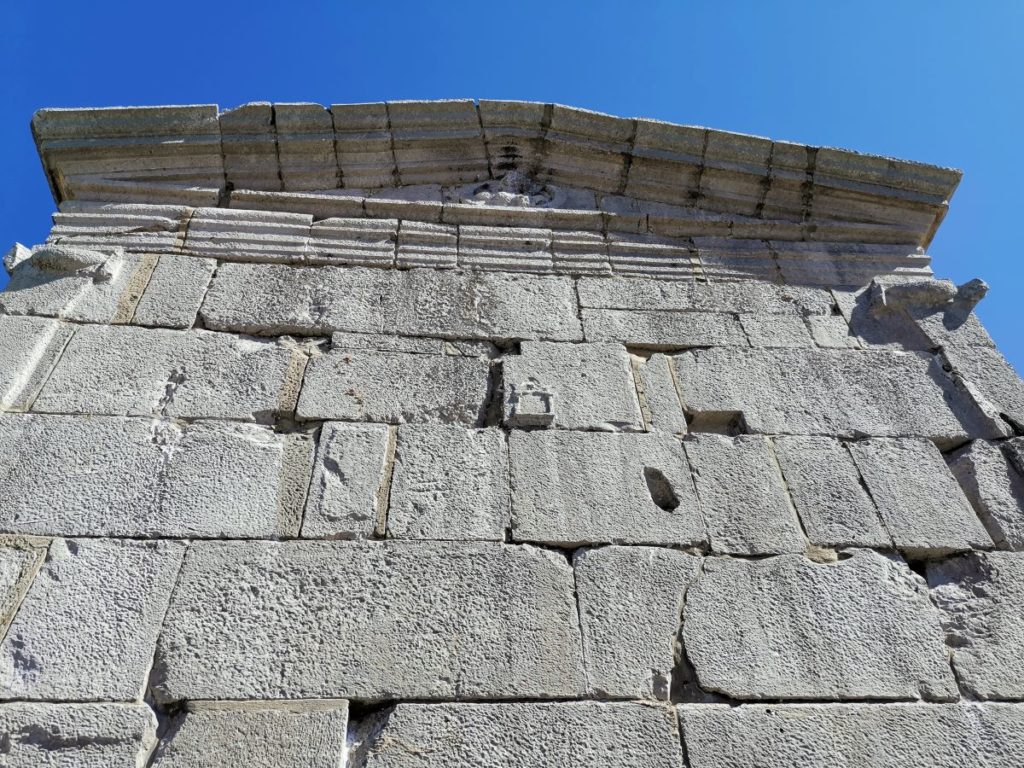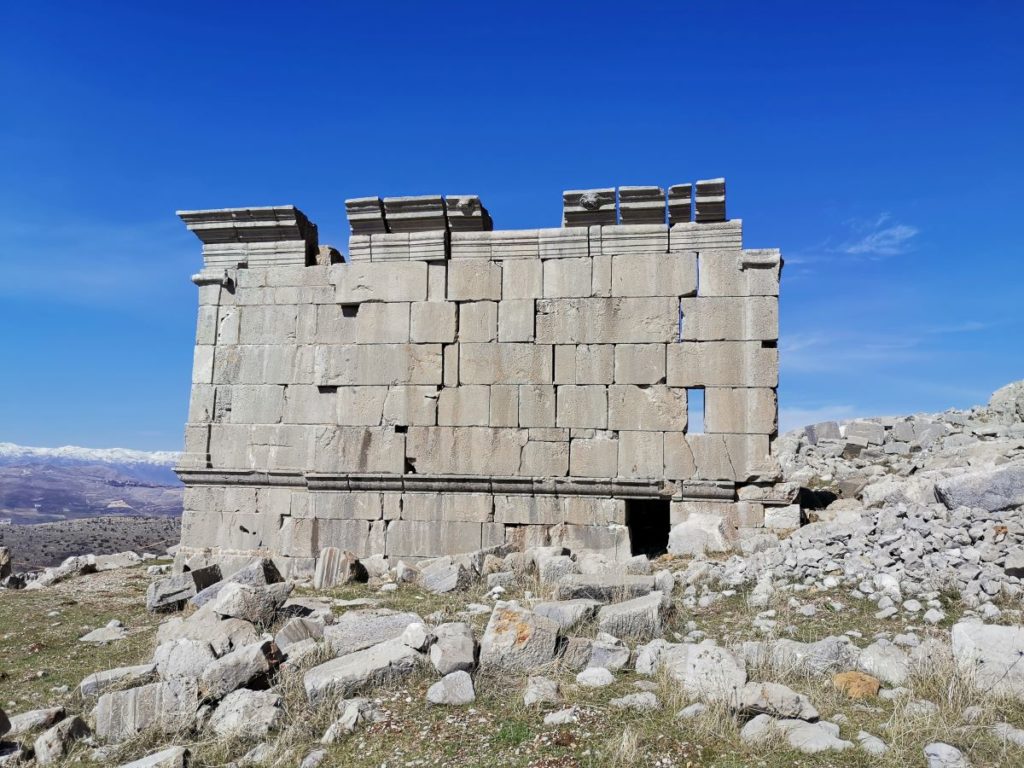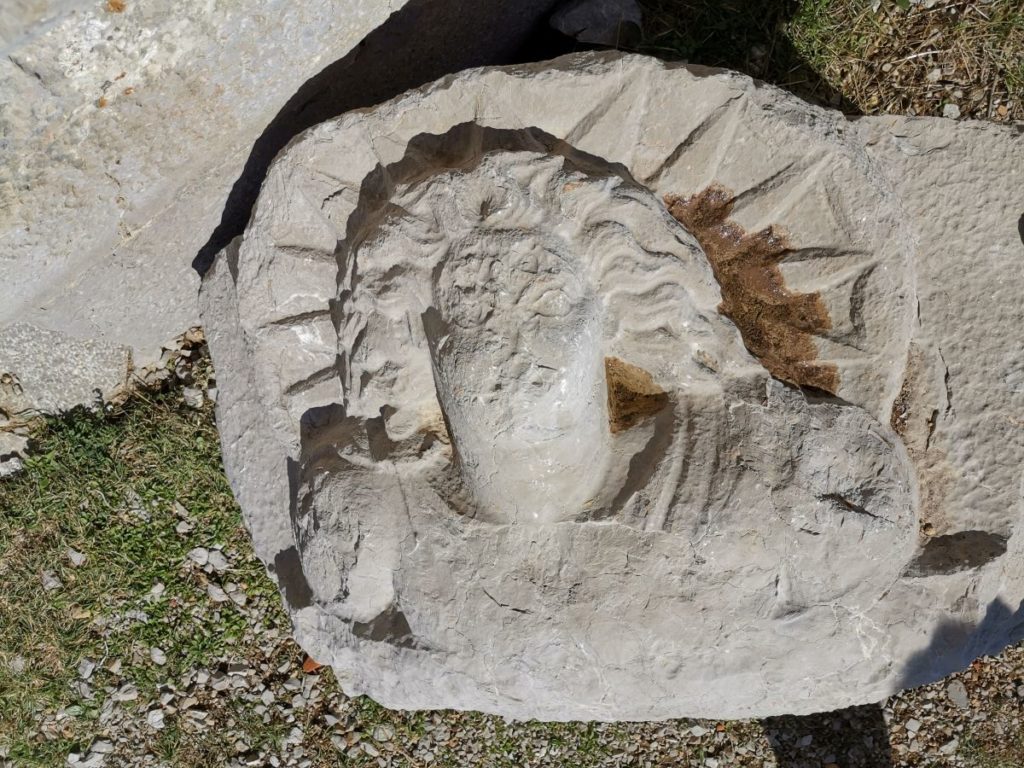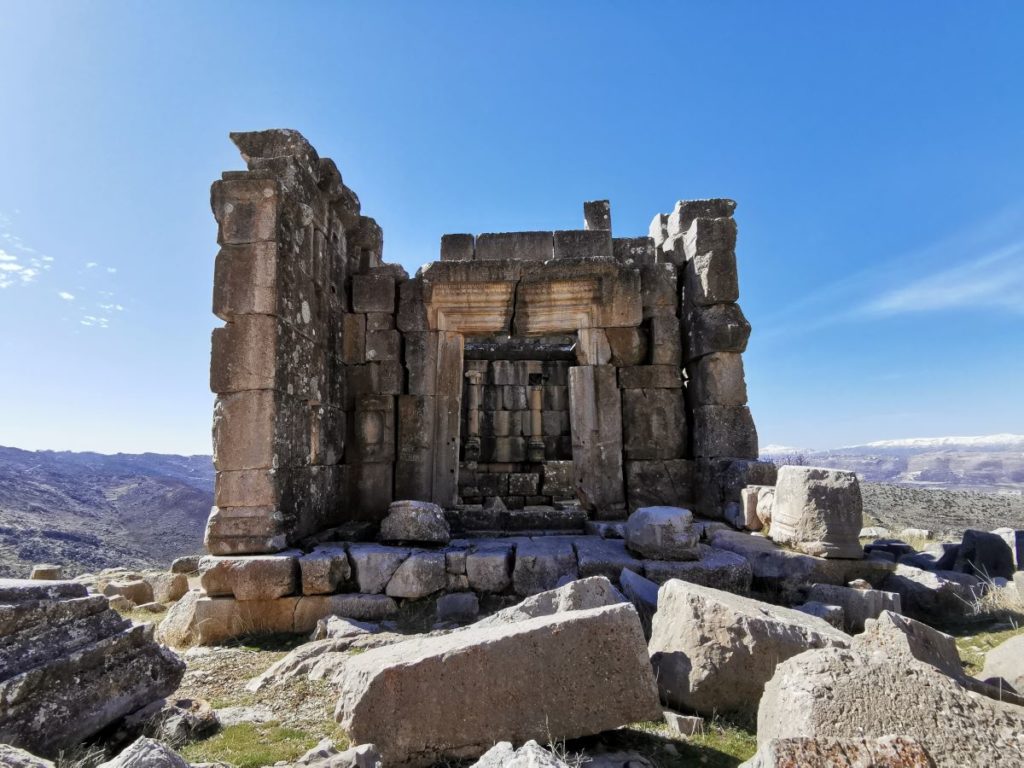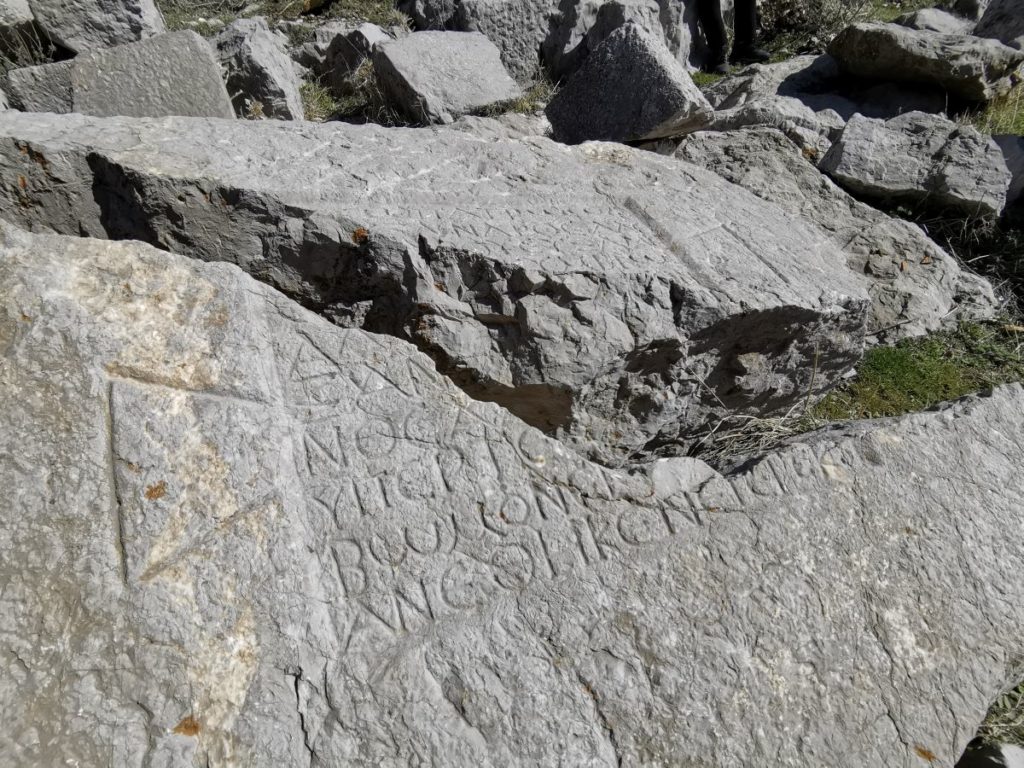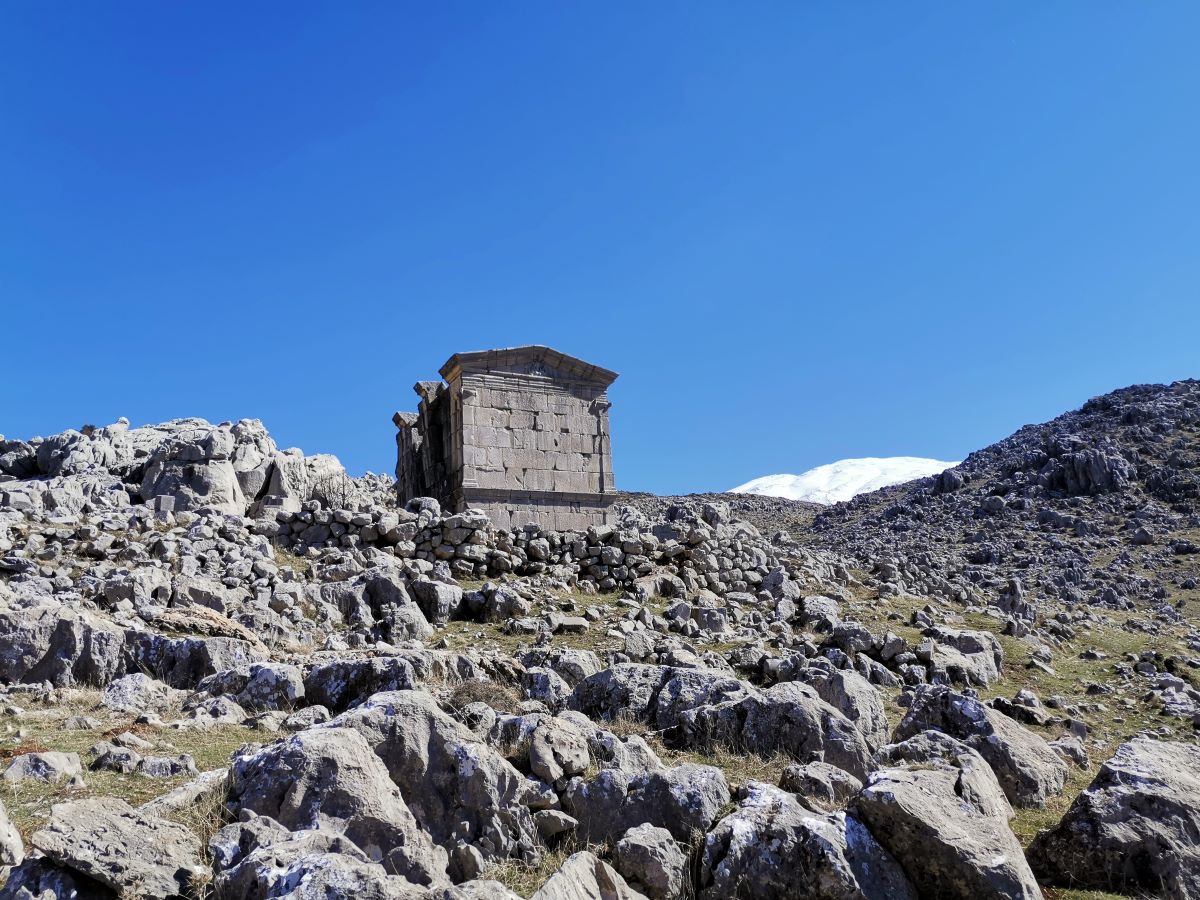Ain-Harcha village houses a Roman-era sanctuary, bordered by remnants of an old settlement and a necropolis.
Date
Carved on a stone in Latin inscription, the construction of the temple is attested to the year 116 AD.
The inscription states the following: “To the ancestral god, Alexandros son of Alexandros dedicated this altar at his expense, with his wife, for his children, in fulfillment of a wish, the year 226” (226 equals 116 during the Sidonian era).
Structure
Open to the east, the temple rises on a high four-seat podium, and includes a pronaos (space of the temple’s entrance) and a cella (section where the deity is venerated) at the bottom of which is the platform of an adyton (sacred area inside the cella).
Following the Ionic order, the structure is built in a distyle in antis design – a temple with the side walls extending to the front of the porch and terminating with two antae (doorway pillars), the pediment being supported by two pilasters (a rectangular column projecting from a wall).
The temple’s interior podium has collapsed with time, while the ornaments and niches of the pronaos and the cella are degraded.
Facing the temple’s entrance, a couple of rocks holding a Greek inscription can be noticed, as well as the foundations of other structures that can be the remains of an altar or a facility that was part of the sanctuary.
On the southern side, and at the foot of the temple’s fondations, a couple of sarcophagus can be noticed, with one of them bearing beautiful bas-reliefs of what appears to be a person wearing a priestly tunic – possibly the tomb of the temple’s priest?
Deity
On the southern side of the exterior façade, the pediment of the temple (triangular gable forming the end of the roof slope) is decorated with a bust of Luna, Goddess of the Moon. On the eastern side of the temple, a rock lays on the ground with a figure of Sol, God of the sun.
These two figures, reflect the cosmic character of the sanctuary and express the omnipotence of a deity sovereign.
Accessibility
After following the GPS location shared in this article, visitors should take a 30min walk up the mountain on a clear open trail. Once you reach the old settlement, you can notice the temple to the east.
Karim Sokhn
Tour Operator & Tour Guide
References:
La vie Religieuse Au Liban Sous L’Empire Romain – Julien Aliquo
